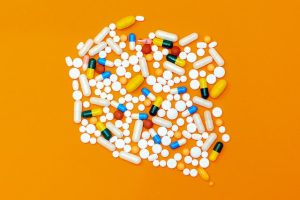Knowledge: What is an inactivated vaccine?
COVID-19 Vaccine Knowledge: What is an inactivated vaccine?
What is an inactivated vaccine? There are several types of vaccines that can be used to fight disease. Inactivated vaccines consist of dead or inactivated viruses and bacteria, so they are different from live vaccines and attenuated vaccines. The type of vaccine used may vary, depending on the infection in question, how the immune system responds to the pathogen the vaccine will treat, and various practical considerations related to vaccine delivery.

How does an inactivated vaccine work?
Many of the frequently used vaccines, such as MMR vaccine (combined vaccine for measles, mumps and rubella) and varicella vaccine, are live attenuated vaccines. These vaccines have a weakened version of the live virus to prevent it from causing disease, but still enable T cells to produce a beneficial immune response to the disease. Inactivated vaccines are another form of vaccine in which the virus is inactivated during the preparation of the vaccine.
Compared with live vaccines, inactivated vaccines are not strongly affected by antibodies in the host. This means that when antibodies are present in the blood (such as in infancy or after taking antibody-containing drugs), they can be administered.
Inactivated vaccines cannot replicate and always require repeated doses to gain immunity. The first dose is the dose that prepares the immune system for a response, but a protective immune response is not produced until the second dose or higher.
Because viruses die during vaccine preparation, they interact differently with the immune system of live attenuated vaccines. The immune response to live vaccines is similar to encountering the virus itself, while inactivated vaccines have little or no cellular immunity. This also means that inactivated vaccines can be used to boost vaccination to supplement previous vaccines.
How to make inactivated vaccines?
In order to make an inactivated vaccine, the virus must grow in a culture medium. This may usually be the initial limiting step in vaccine production, because manufacturers need to know what conditions can promote virus growth.
Virus inactivation is accomplished by heating. Sometimes, inactivation is done through chemicals such as formalin. When the vaccine in production is fractionated (that is, it is based on protein or polysaccharides), the vaccine is further purified so that only the target subunit is retained.
What pathogens can inactivated vaccines treat?
Most inactivated vaccines can be used as whole-cell inactivated vaccines. They can target viruses such as polio, hepatitis A and rabies. There are also vaccines against toxoids such as hepatitis B, anthrax and tetanus.
Several inactivated vaccines have been discontinued. Inactivated vaccine for influenza and bacterial diseases (such as typhoid fever, cholera and plague). There is also a subunit vaccine against Lyme disease that has been discontinued.
In contrast to live attenuated vaccines, the use of inactivated vaccines is a controversial issue. For example, in the United States, inactivated vaccines for influenza are currently available as subunits instead of whole virus vaccines. Live attenuated vaccines can cause pathogen infection in rare cases, and their use for influenza has caused some children and the elderly to be hospitalized. Therefore, inactivated vaccines are recommended.
However, although inactivated vaccines have been suggested for influenza, their efficacy may be reduced when used in young children . More extensive studies comparing live attenuated vaccines with inactivated vaccines have shown that live attenuated vaccines can increase their effectiveness by 18% in reducing the rate of virus attack. In addition, inactivated vaccines require multiple infections, which makes it difficult to implement on a large scale.
Inactivated COVID vaccine
Currently, vaccine manufacturers all over the world are racing to make a vaccine against COVID-19. Many companies that have tried this have used tried and tested technologies, including inactivated vaccines.
Sinovac Biotech is trying to make an inactivated whole virus particle vaccine with an additional immune booster called alum. This has successfully combated the SARS virus. Inactivated vaccines may be beneficial in fighting COVID, because in many countries, they are easily scaled up for mass production.
However, the potential efficacy of an inactivated vaccine against COVID-19 is unclear. At present, experiments using inactivated vaccines (inactivation with formaldehyde and ultraviolet light) have been effectively used in mouse models.



